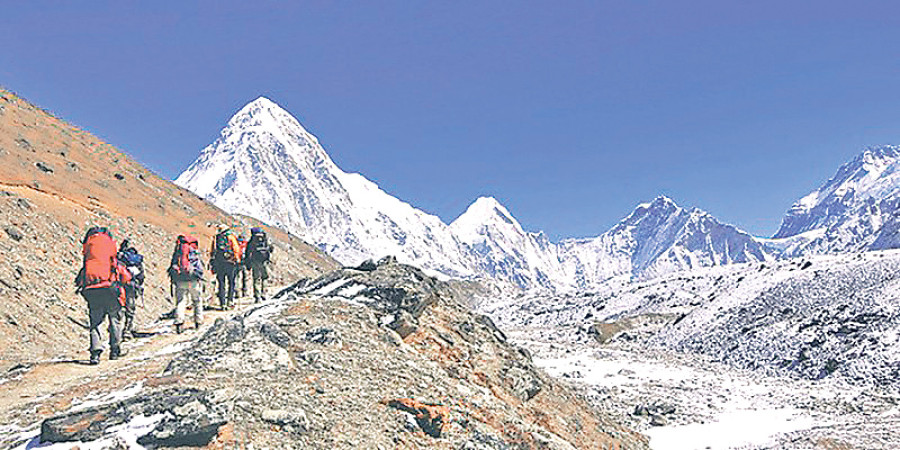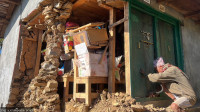Opinion
It takes two to tango
Travel and tourism is an important economic activity in most countries. In addition to its direct economic impact, there are significant indirect and induced impacts. Tourism is turning into the strongest service industry in the world with its resilient power to overcome adverse impacts to satisfy the human quest for travel.
Travel and tourism is an important economic activity in most countries. In addition to its direct economic impact, there are significant indirect and induced impacts. Tourism is turning into the strongest service industry in the world with its resilient power to overcome adverse impacts to satisfy the human quest for travel. Countries around the world are seeking to tap the benefits of this sector to fulfil their resource gap. As the travel trade is closely interlinked with infrastructure and tranquillity, politically stable nations have been at the forefront in the global race.
Though the trade is almost entirely in the hands of private entrepreneurs, government efforts are at the centre of promotion and development. In most countries, the government is very loosely involved in the tourism business, but its policy support and incentives play a vital role in its development. Tourism as a unique and multidisciplinary subject comprises an amalgamation of economics and psychology variables; hence it does not fully follow the concept of demand and supply. In true terms, there are many variables beyond our imagination which control the flow of tourism. For instance, a volcano in Indonesia or mist in India can create an immense cascading effect on travel decisions and industry trends.
Proper prioritisation
Nepal’s desire to boost arrivals to 2 million by 2020 with a series of campaigns can be achieved if proper fine tuning is done to the policies governing aviation, promotion and repeat visitors. The energy for creating synergy is only possible if aviation, trade and the government stand with renewed zeal and synchronise their efforts. For instance, Nepal Airlines and the Nepal Tourism Board should synthesise their promotional programmes so that they remain all-season partners. Other airlines barely care about our motive, as profit is their underlying interest.
Likewise, the flow of low cost carriers is certainly not good if the country’s aim is to become a quality destination. They are certainly good if tourist numbers are taken as the sole yardstick of success. We have seen that unless the government firmly stands behind the private sector, tourism cannot flourish. Nepal has organised several tourism campaigns in the past, and most of them got close to achieving their arrival targets. However, their real success has been in educating the public about the importance of tourism to the national economy. Nepal Tourism Year 2011 is an example of a successful campaign.
Nepal is heading towards stability by adopting federalism. The end of bandhs and strikes will greatly help the government to achieve its goal of development and prosperity. At this juncture, when all seven provinces are poised to launch programmes to promote their respective tourism industries, the central government should encourage them and support their endeavours.
Focus on authenticity and branding
The creation of a national brand with sub-national themes is another process which we have to initiate soon. The participation of sub-national players in national and international promotional platforms highlighting their respective tourist assets is necessary. And it will be wise if the National Tourism Organisation (NTO) also works in tandem with their spirit not only by establishing its own sub-branches but also by moving ahead as a helping hand while devising their national plans, policies and sub-brands. It would certainly be good if public private partnership sub-boards are established to properly reflect the genuine concept of a bottom-up approach in formulating plans, programmes and policies at the sub-national levels too.
Devolving power to steer tourism to the provinces will better addresses local concerns when many airports and other infrastructure are getting ready to cater to local needs. The opening of regional airports certainly helps to expand direct link with peripheral prospective destinations. Likewise, improved air connectivity with Pokhara after the completion of another regional airport there could boost entrepreneur confidence and encourage them to increase their investments.
‘Connectivity’ has become the buzzword in modern times, and this will certainly inspire regional and global players to converge their common interests. Fair play in the market will help to establish Nepal as a quality destination. However, the bottom line is that Nepal’s traditions and unique characteristics should not ever be forgotten when devising plans and programmes. The day we forget to retain our Nepali character and bring Western flavours in our products and offers, tourism will vanish from this hand and be seized by foreigners. Hence, let us see tourism as a composite product and not a homogenous one.
Baral is a senior director at the Nepal Tourism Board




 14.12°C Kathmandu
14.12°C Kathmandu









